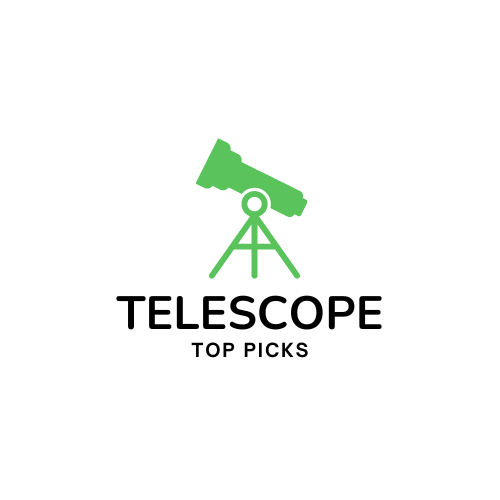
Imagine you’re standing beneath a breathtaking starry sky, gazing up at the wonders of the universe. In your search for clarity, you may find yourself contemplating the difference between a telescope and a spotting scope. While both instruments allow you to observe distant objects, they each serve unique purposes. So, let’s embark on a journey together to uncover the disparities between these two powerful tools.

Introduction
When it comes to exploring the wonders of the night sky or capturing breathtaking views of nature, having the right optical instrument is essential. Two popular choices for observing distant objects are telescopes and spotting scopes. While both serve a similar purpose, there are several key differences between these two optical devices. In this article, we will delve into the definitions of telescopes and spotting scopes, explore their unique features and applications, examine the disparities in design and functionality, discuss the factors to consider when choosing between the two, and ultimately help you make an informed decision.
Definition of Telescope
A telescope is an optical instrument that collects and magnifies light, allowing you to observe celestial phenomena such as stars, planets, and galaxies. Its main purpose is to capture light and form an enlarged image of the object being observed. Magnification and image quality are two critical factors to consider when choosing a telescope.
Magnification and Image Quality
Telescopes have the inherent ability to magnify objects, bringing distant celestial bodies closer and revealing incredible details. However, it is important to note that higher magnification does not always guarantee better image quality. Other factors, such as the telescope’s aperture, optical quality, and atmospheric conditions, also play a crucial role in determining the clarity and resolution of the observed image.
Types of Telescopes
There are several types of telescopes available, each with its own advantages and disadvantages. The most common types include refracting telescopes, reflecting telescopes, and catadioptric telescopes. Refracting telescopes utilize lenses to bend and focus light, whereas reflecting telescopes use mirrors. Catadioptric telescopes combine both lenses and mirrors to achieve the desired optical performance. The choice of telescope type depends on various factors, such as personal preference, intended use, and budget.
Applications of Telescopes
Telescopes have a multitude of applications, ranging from amateur stargazing to advanced astronomical research. They enable astronomers to study the cosmos, track celestial movements, and make groundbreaking discoveries. In addition to astronomy, telescopes can also be used for terrestrial viewing, birdwatching, and even photography. The versatility of telescopes makes them a valuable tool for anyone with a passion for exploration and discovery.
Definition of Spotting Scope
A spotting scope, on the other hand, is a portable telescope primarily designed for terrestrial viewing. Its main purpose is to provide magnification and image clarity for observing objects on land, whether it be wildlife, landscapes, or other distant subjects. While spotting scopes may not have the same level of magnification as astronomical telescopes, they excel in providing sharp, detailed images for terrestrial observation.
Magnification and Image Quality
Spotting scopes offer varying levels of magnification depending on the model, with most falling within the 20x to 60x range. This range is ideal for observing objects like birds, wildlife, and distant landscapes. Similar to telescopes, image quality in spotting scopes depends on factors such as lens quality, coatings, and atmospheric conditions.
Types of Spotting Scopes
Spotting scopes come in different designs and configurations to suit various needs. Straight spotting scopes provide a direct line of sight, making them easier to use for beginners and for quick target acquisition. Angled spotting scopes, on the other hand, offer more versatility in terms of viewing positions and are often favored by experienced users. Different eyepiece options are also available, offering different magnification levels and fields of view.
Applications of Spotting Scopes
Spotting scopes find extensive applications in activities such as birdwatching, nature observation, hunting, and target shooting. Their portability and ease of use make them popular among outdoor enthusiasts who require a lightweight and compact optical device to enhance their viewing experience. Additionally, spotting scopes are often used by hikers and mountaineers to appreciate the grandeur of distant landscapes and capture stunning photographs.
Differences in Design
Size and Portability
One of the key differences between telescopes and spotting scopes lies in their size and portability. Telescopes, especially those designed for astronomy, tend to be larger and more cumbersome due to the need for larger apertures, complex optical systems, and stability. Spotting scopes, on the other hand, are generally more compact and lightweight, making them easier to carry and transport. This portability factor makes spotting scopes a popular choice for individuals who require a versatile optical instrument that can be easily taken on outdoor adventures.
Optical Characteristics
While both telescopes and spotting scopes employ similar optical principles, their designs differ to optimize performance for their respective purposes. Telescopes prioritize light-gathering capabilities and high magnification, while spotting scopes prioritize image clarity and color fidelity. The optical characteristics of spotting scopes are tailored to produce sharp, detailed images in terrestrial environments, whereas telescopes prioritize capturing faint celestial objects and studying their intricate details.
Focus and Field of View
Another design difference between telescopes and spotting scopes is the focus mechanism and field of view. Telescopes often have a narrower field of view, allowing for more precise observation of individual celestial objects. Spotting scopes, however, offer wider fields of view to comfortably observe larger areas, making them ideal for tracking moving targets or scanning landscapes. The focusing mechanism also differs, with telescopes often utilizing precise rack-and-pinion focusers and spotting scopes offering quick and smooth focusing knobs.

Differences in Functionality
Astronomy vs Terrestrial Viewing
The primary function of telescopes is astronomy, allowing observers to explore the depths of the universe and unveil celestial wonders. Telescopes are built to capture and analyze faint light from distant celestial objects, revealing details that cannot be seen with the naked eye. Spotting scopes, on the other hand, are designed for terrestrial viewing. They excel in providing detailed, high-quality images of objects on land, making them a versatile tool for activities such as wildlife observation, nature photography, and target shooting.
Observational Range
Telescopes, with their high magnification capabilities, can observe astronomical objects over vast distances, allowing users to peer into deep space. On the other hand, spotting scopes provide a closer view of terrestrial objects, allowing for detailed observation and identification of wildlife, landscapes, and other subjects at shorter distances. The differing observational ranges of telescopes and spotting scopes make them suitable for specific purposes and environments.
Image Stabilization
Image stabilization is a feature commonly found in spotting scopes but less frequently in telescopes. Spotting scopes often integrate stabilization technologies to mitigate the effects of hand shake and vibrations, resulting in clearer and more stable images, especially at higher magnifications. This feature is particularly useful in situations where the observer may not have access to a tripod or requires quick and nimble movements while maintaining image stability.
Differences in Price
When it comes to price, telescopes and spotting scopes can vary significantly depending on factors such as brand, size, optical quality, and additional features. In general, telescopes designed for astronomy tend to be more expensive due to their intricate optical systems and specialized components. Spotting scopes, with their smaller form factor and focus on terrestrial viewing, often offer a more affordable entry point into the world of high-quality optics. However, it is important to note that high-end spotting scopes equipped with premium features can rival or exceed the price of some telescopes.

Choosing Between a Telescope and a Spotting Scope
Purpose of Use
The first and most crucial factor to consider when choosing between a telescope and a spotting scope is the intended purpose of use. If your primary interest lies in exploring the wonders of the night sky, studying celestial objects, and expanding your knowledge of astronomy, a telescope is the ideal choice. On the other hand, if your interests revolve around terrestrial observation, wildlife watching, or capturing stunning photos of nature, a spotting scope would be the more suitable option.
Budget Constraints
Budget constraints can also play a significant role in the decision-making process. Telescopes designed for astronomy tend to range from affordable beginner models to high-end professional-grade instruments that can carry a substantial price tag. Spotting scopes, on the other hand, often offer more affordable options, making them accessible to individuals with tighter budgets. It is essential to weigh your priorities and financial capabilities to ensure you make a wise investment.
Transportation and Setup
Consideration should also be given to the transportation and setup requirements of each optical device. Telescopes, especially larger models, can be bulkier and require more complex assembly and calibration. Spotting scopes, being smaller and more portable, offer a more convenient setup process and can be easily transported to different locations. If you anticipate frequently moving your optical instrument or require a lightweight device for on-the-go adventures, a spotting scope may be the more practical choice.
Conclusion
In conclusion, telescopes and spotting scopes serve different purposes and cater to distinct areas of interest. Telescopes excel in revealing the wonders of the night sky, allowing us to explore and comprehend the vastness of the universe. Spotting scopes, on the other hand, provide detailed and crisp views of terrestrial objects, making them ideal for nature observation, birdwatching, and other outdoor activities. By understanding the differences in design, functionality, and purpose of use, you can make an informed decision when choosing between a telescope and a spotting scope. Ultimately, both these optical instruments have their unique advantages and can bring immense joy and discovery to your explorations of the natural world and beyond.








